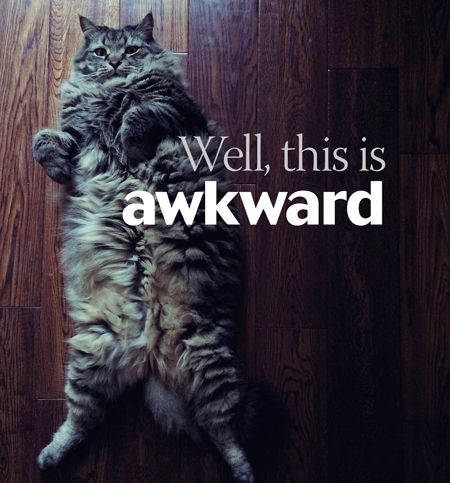Hey, that was awkward: Dealing with obese pets (but mostly their owners)
We all know itweight is personal. It's often an emotional trigger for clients. Avoid the awkwardness and promote healthier lifestyles for pets and owners using these 4 tips.

Want to get awkward in the exam room? Tell a client her pet is fat. It's like saying a friend's baby is ugly. And, just like a proud new parent, 9 out of 10 owners of overweight pets just don't see it. So, let's be real. This isn't just about pets' weight, is it? According to the Centers for Disease Control and Prevention, about every third client you see is likely to be overweight or obese. And when you tell someone their pet is overweight, you might as well be rubbing their own weight problem in their face. Weight is personal. Yet when it comes to a pet's health, veterinarians are obligated to deliver the blow.
4 things to consider the next time you've got an obese pet and the owner in your exam room:
1. This is an intervention.
OK, so not as dramatic as reality TV, but perhaps just as uncomfortable. Establishing an appropriate dietary therapy regimen involves two important goals: The plan must be tailored to the individual animal, and caloric restriction must occur without concurrent protein starvation to prevent a loss of lean muscle tissue during weight loss. The ultimate weight loss goal should be based on the pet, the family's situation and goals, and the entire family's-including the pet's-ability to reach the goal.

Weigh in: 3 ways to squeeze obesity into your exam-room chats.
1. Lay off the language. Although the weight conversation can be a tricky one, it's best to be honest-and clinical. Avoid possibly hurtful-or easily internalized-terms such as fat or chubby. Instead, use the Body Condition Scoring system and medical terms such as overweight and obese.
2. Get their arms around the problem. Invite clients to feel their pet's ribs and belly. If the pet is overweight, it's difficult to feel the ribs. If the pet is obese, clients may end up grabbing a handful of fat around their pet's tummy. Also have them stand above their pet to see the lack of visible “waist” and the broad, flat back.
3. It's not fat, it's inflammation. Weight loss talk is everywhere and many have gone numb to it. Other clients will dismiss pet weight loss as just one more way those “greedy veterinarians” are trying to scam them. So, Ernie Ward, DVM, says, don't talk weight: Talk inflammation. Adipokines-signal proteins produced by fat tissue-cause or contribute to hundreds of harmful inflammatory processes throughout the body. Go with that.
2. Take things slow.
It's important to start an exercise program slowly and gradually increase the duration and intensity of the exercise. In some cases, exercise may be impossible because of preexisting conditions in the pet or because of the owners' inability to exercise. The parallel problem of excess weight in pets and their owners represents a unique opportunity to target weight loss and increase activity in both groups. Suggest low-impact walking, chasing a ball, tossing a Frisbee, swimming or using an underwater treadmill and socializing at a dog park.
3. Drugs aren't (always) the answer.
All pharmacologic weight-management aids should be considered short-term interventions, may have significant side effects and may be contraindicated in some patients. Only one drug, dirlotapide (Slentrol-Zoetis), is FDA-approved for weight loss in dogs. Weight loss will most likely be temporary if owner behaviors are not concurrently modified to promote a more healthful lifestyle. Explain that treats are similar to snacking between meals for people, and when giving treats is a well-established habit, it may require consciously and permanently adjusting what role treats play in the relationship (i.e. owners should consider bonding with their pets via a physical activity rather than through giving treats).
4. It's a shared responsibility, y'all.
Adherence is crucial for the success of any weight-loss plan. A pet's family is responsible for feeding the correct amount of food and treats, weighing the pet regularly, following through on adjustments, exercising the pet and controlling the dog's access to unmonitored food sources. The family must be committed to the weight-loss program for several months. A pet's family members must understand how long the weight-loss plan may take, and they should be encouraged to focus on the progress rather than on a quantitative end goal.

Source: 2014 National Pet Obesity Prevalence Survey by the Association for Pet Obesity Prevention, Centers for Disease Control
If weight feels intensely personal, food is just as big of a deal. Many pets become overweight or obese because of the social bonding that occurs with owners during feeding. This human-animal-bond activity adds a strong behavioral component to the development of obesity. Food is such an important part of daily culture that it is critically important to recognize how owners view food. (We're getting deep here!)
-These weight loss nuggets are from Christopher G. Byers, DVM, DACVECC, DACVIM, and colleagues. Here he delves much deeper into treating excess weight in pets with a multiple-modality approach.